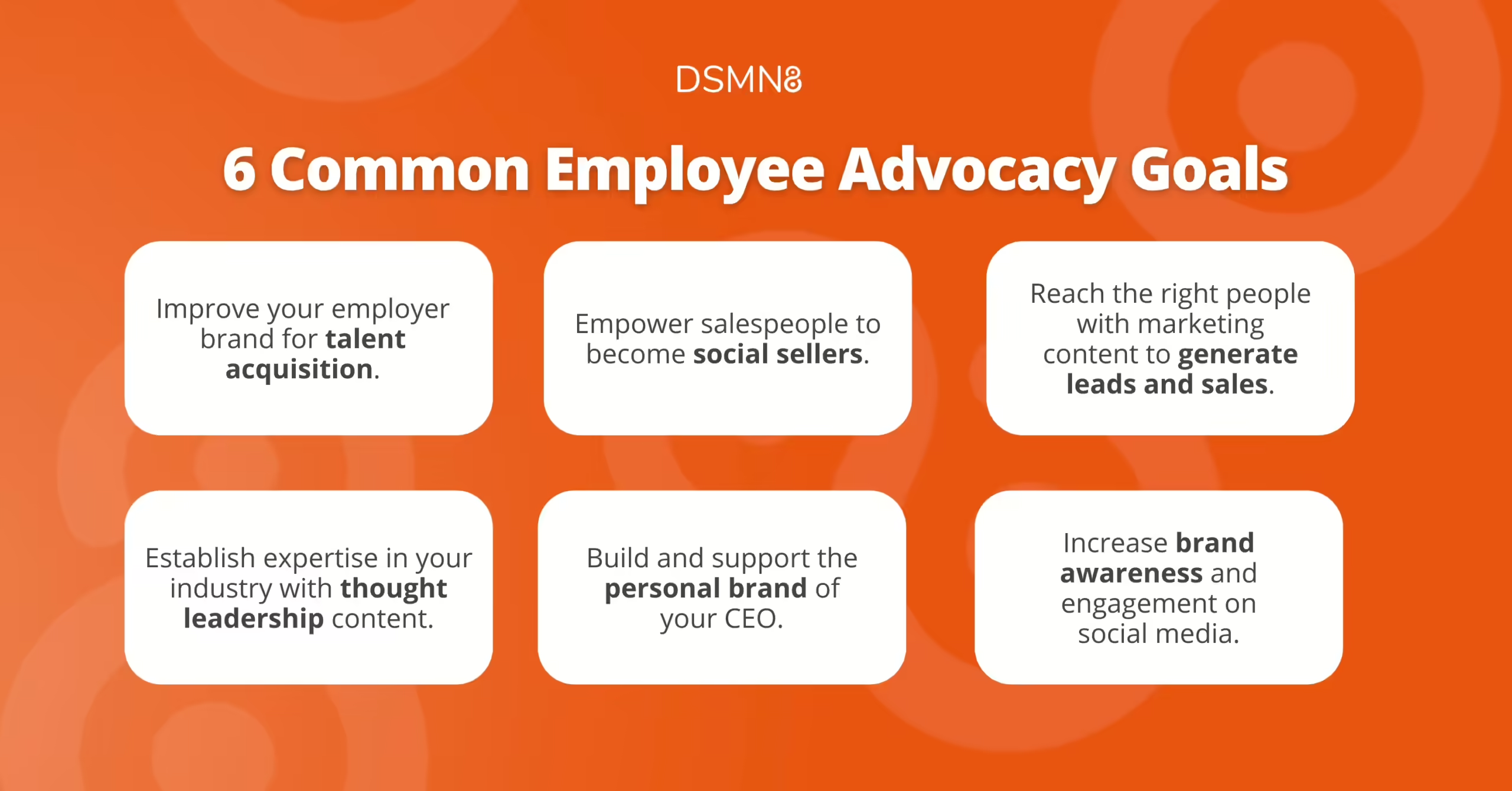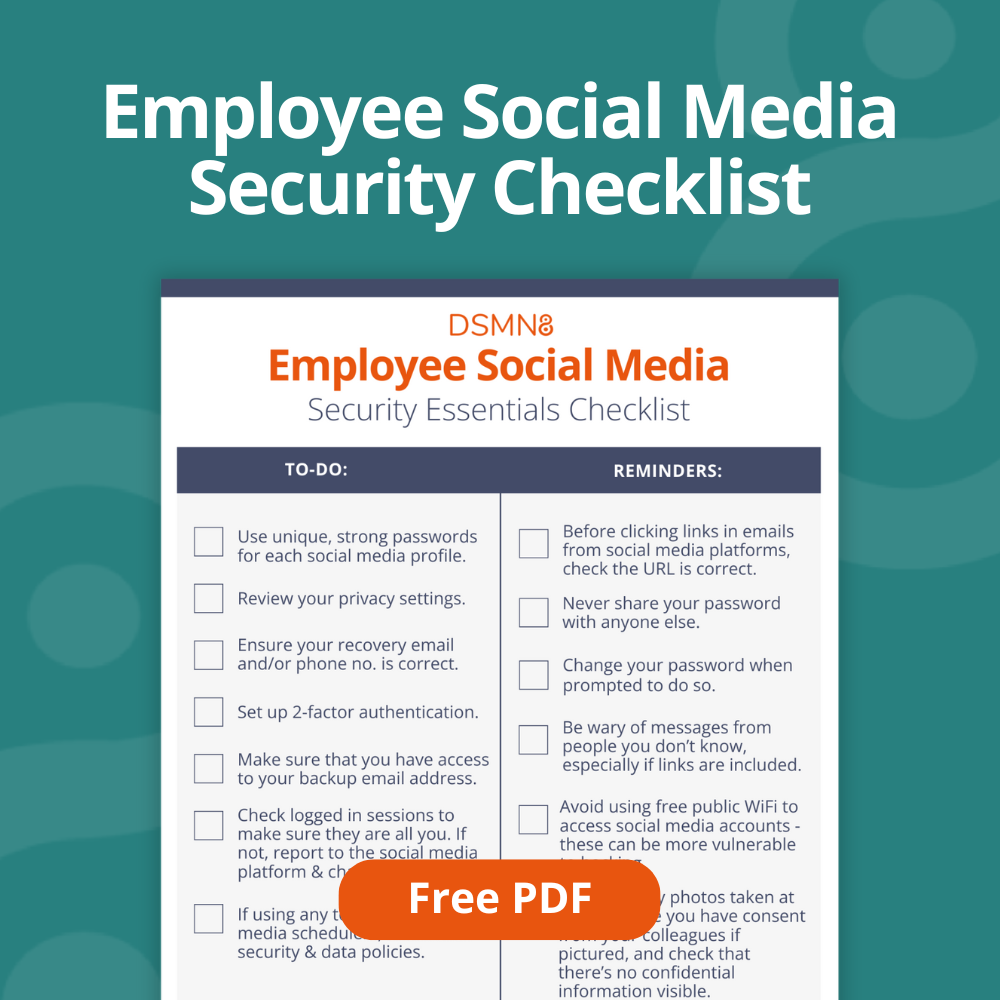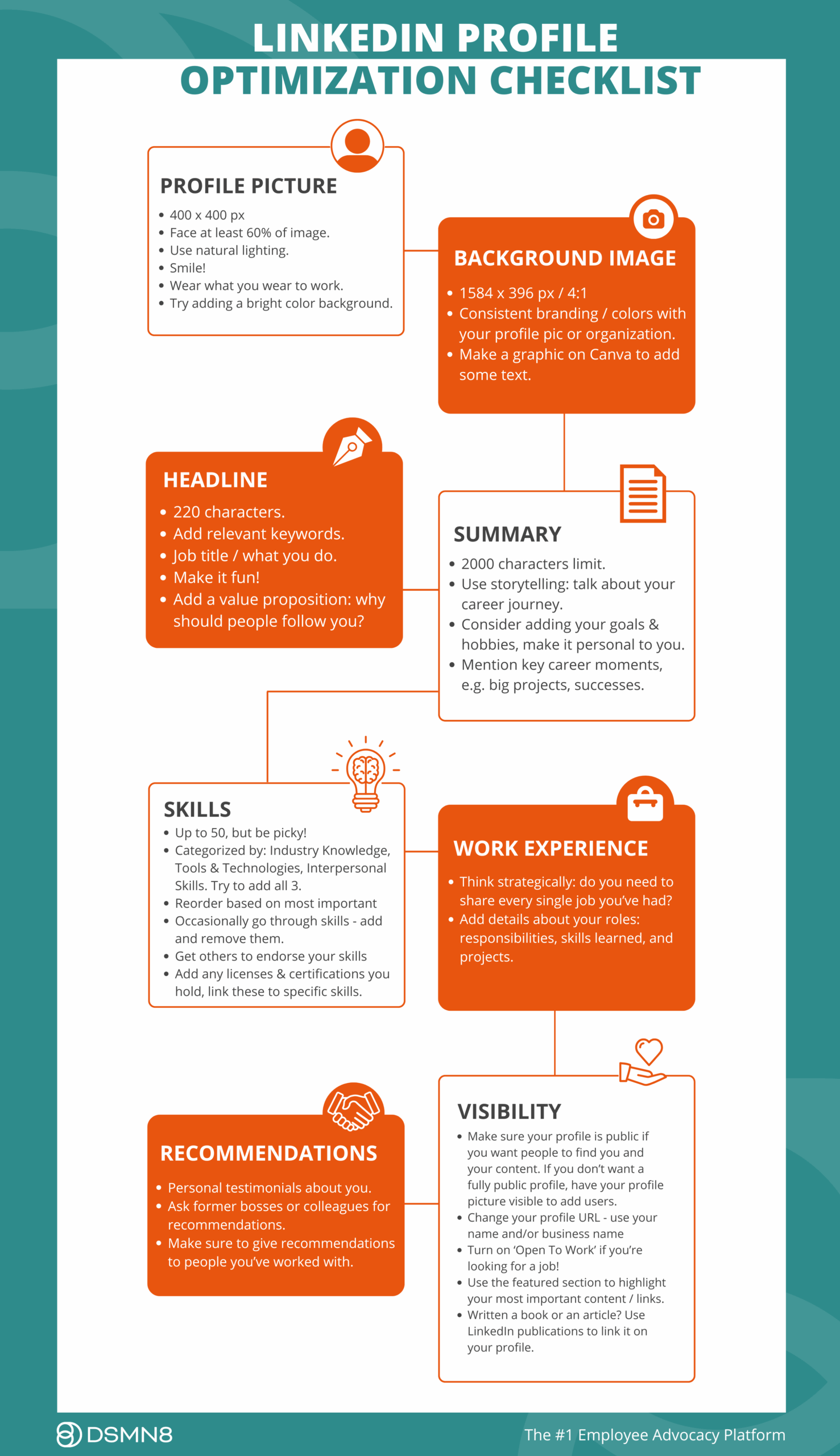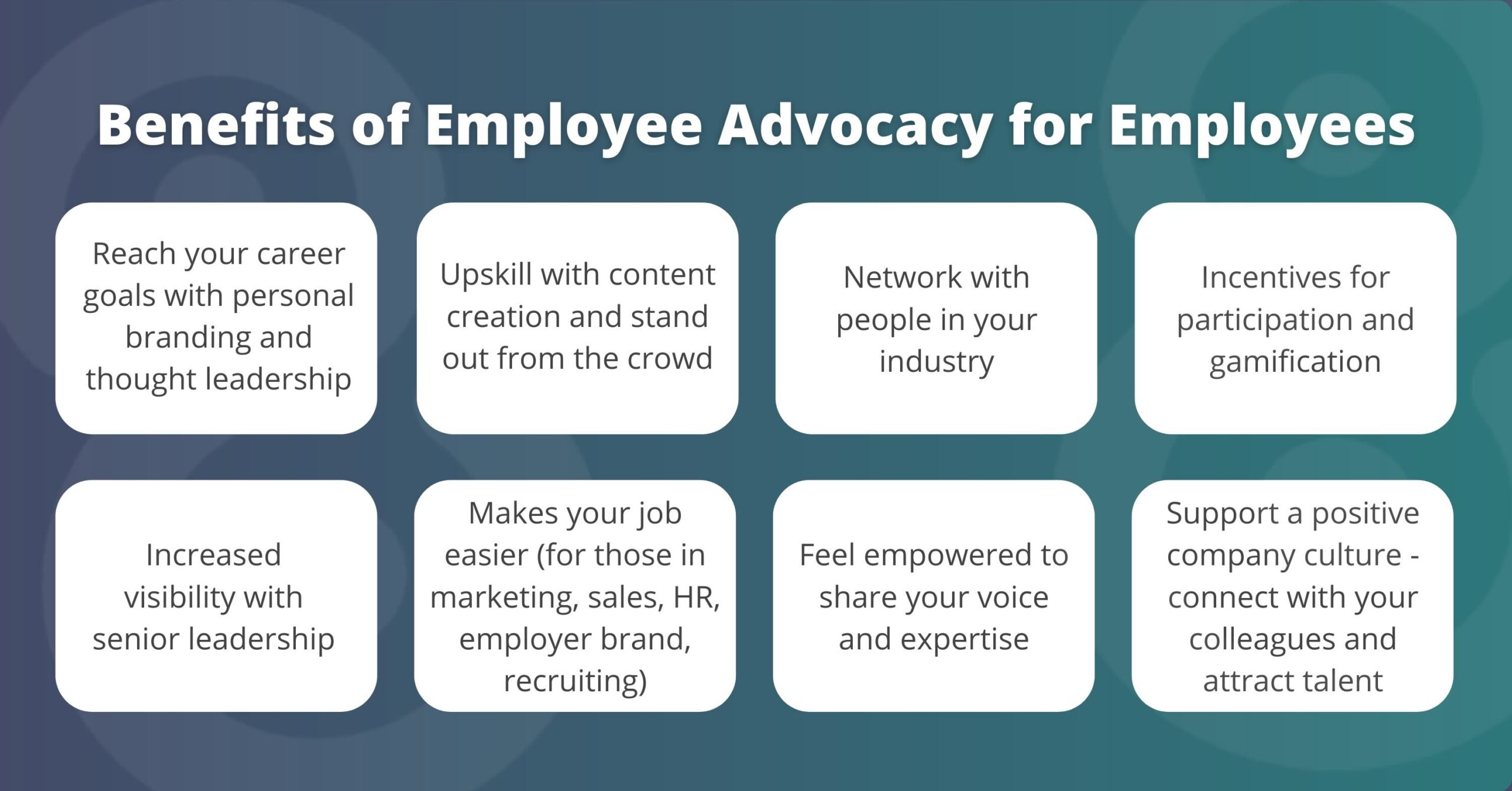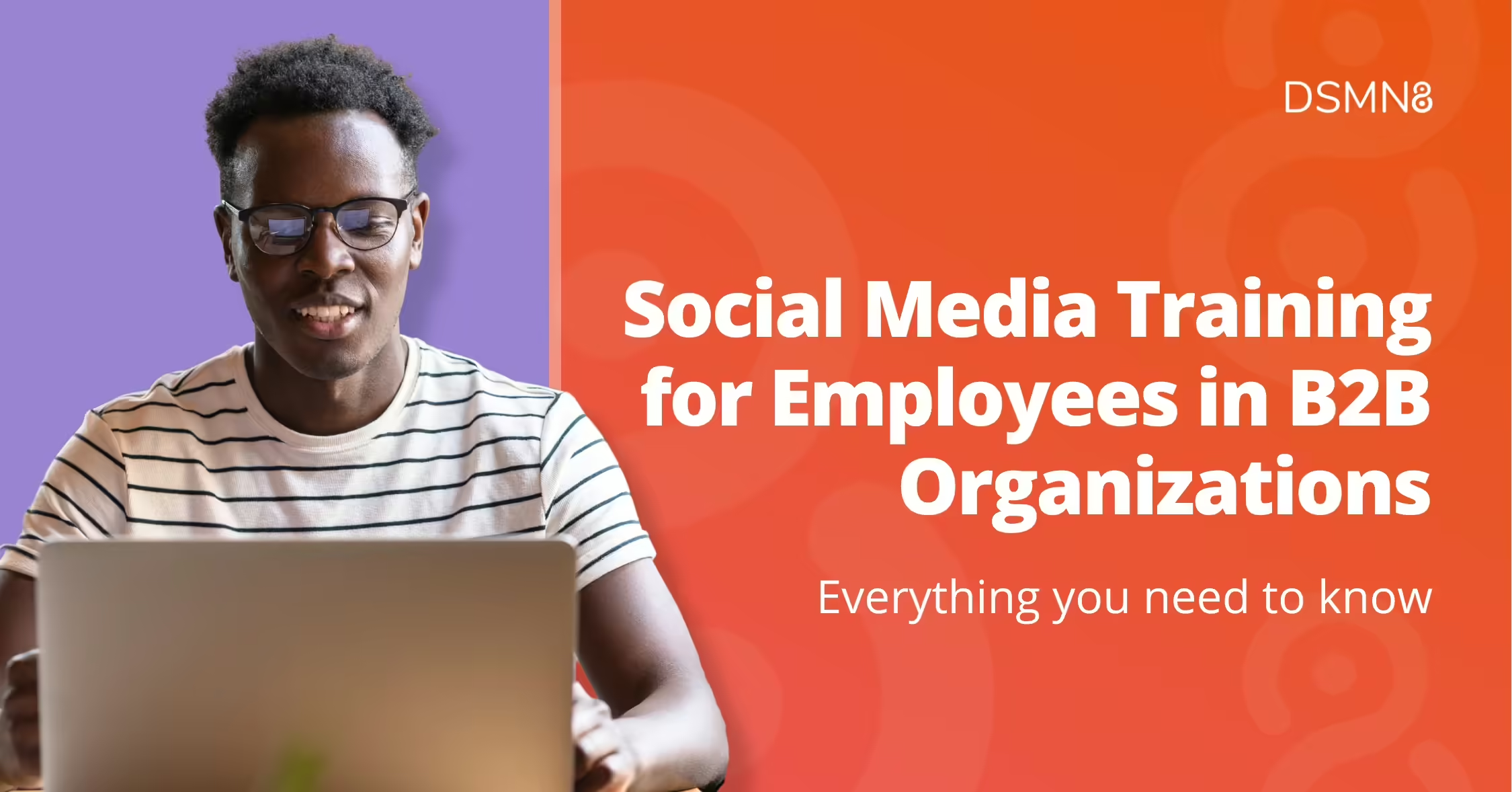
Social media has become an indispensable tool for businesses across all sectors. For B2B companies, in particular, platforms like LinkedIn have emerged as powerful channels for networking, lead generation, and brand building.
However, the true potential of these platforms often remains untapped due to a critical oversight: a lack of social media training for employees.
Many organizations focus their social media efforts solely on official company accounts, overlooking a tremendous opportunity presented. Every employee has the potential to extend the company’s reach and influence far beyond traditional marketing efforts. But without proper guidance, this potential can remain unrealized or, worse, become a liability.
Today, we’re covering everything you need to know about employee social media training, focusing specifically on B2B organizations. We’ll explore the why, what, and how, outlining the key components of a successful training strategy to empower your team on social media.
Why Provide Employee Social Media Training
Providing employee social media training is no longer a nice to have; it’s essential. As the lines between personal and professional online presence blur, employees become de facto brand ambassadors, whether intentional or not.
Proper training will ensure that your team understand the potential impact of their social media activities on the company’s reputation and bottom line. You’ll not only mitigate any potential risks, but unlock a powerful asset for scaling your B2B sales and marketing efforts: employee advocates.
Training equips employees with the knowledge to leverage social platforms effectively, enhancing the organization’s visibility and credibility. Trained employees can amplify your marketing efforts, engage in social selling, and even assist in talent acquisition by showcasing your company culture.
What Should Social Media Training Include?
Don’t skip this part: before conducting any social media training, your social media policy must be up-to-date.
If you need some inspiration, we’ve got a free customizable template you can use and a guide to creating a social-first policy.
There’s no point holding sessions with your team covering things like creating engaging content and optimizing their LinkedIn profiles if your company’s social media policy is 10 years in the past, forbidding all social media use 🙈
Once you (and other stakeholders such as HR or senior leadership) are happy with your social media policy, you can start mapping out your training plan.
The first part to consider is your organization’s goals with employee social media. What do you want to achieve from this?
Perhaps your organization previously had a negative view of social media, but that mindset has shifted in the age of LinkedIn, and this needs to be communicated.
You may be launching an employee advocacy program and want to encourage your team to create content within a framework of reasonable safety and security guidelines.
Or perhaps you’ve got a team of B2B social media rockstars on your hands and want to provide the support needed to maximize the opportunity that your employee influencers present.
Understanding your desired outcome and your team’s experience level enables you to tailor your social media training to suit the company and its employees.
If your employees are already regularly posting, they won’t need to know how to create a LinkedIn account!

5 key elements to employee social media training
Though your own social media training will vary depending on your goals and how knowledgable your employees already are, there are some fundamentals that every training plan should include.
In our experience, it boils down to 5 key elements 👇
Employee LinkedIn Training Essentials
LinkedIn profiles
As the primary professional social media platform, LinkedIn is essential for most B2B organizations.
In fact, 89% of all content shared through the DSMN8 platform is to LinkedIn!
So, it makes sense to focus on LinkedIn when providing training and guidelines for a B2B team.
Start at the beginning—optimizing their profiles. Cover best practices such as:
- Using relevant keywords in their Headline and Summary for SEO.
- Make sure their profile picture is professional: a clear headshot is ideal.
- Check settings to double-check that their profile and profile picture are visible to those outside their immediate connections. This is essential for growth!
We’ve got a full guide to optimizing your LinkedIn profile, so give that a read for more detailed advice.
LinkedIn content
Once their profiles are ready to go, it’s time to talk about content.
If you’re starting an employee advocacy program, you will likely provide ready-to-share content to employees.
But that doesn’t mean you can’t encourage employee-generated content at the same time! In fact, the more authentic their LinkedIn posts are, the better results you’ll see 📈
Get your social media manager or marketing team involved to provide easy-to-follow tips for content creation.
The key here is to keep it simple. The last thing you need is for employees to feel confused or like they’re taking on another job! 😫
Here’s what you could do:
- Provide a list of relevant hashtags for your industry. Explain why and how to use them.
- Curate some good example LinkedIn posts for inspiration.
- Emphasize the importance of replying to comments they receive.
- Set a goal for consistent posting: this could be once per week for most employees, increasing to 3x a week for those in sales and marketing, for example.
- Create prompts to help them develop content ideas, such as: “find a relevant industry news article and share it, adding your own insights on the news”.
More LinkedIn resources
With our years of experience helping B2B organizations get employees active on LinkedIn, we’ve created a bunch of resources and guides to help:
How to Conduct Employee Social Media Training
Now we’ve covered everything that should be included in your B2B employee social media training plan, let’s jump into the best approaches for successfully carrying out this training.
Two key factors to keep in mind:
1) Make it engaging and easy to understand. The last thing employees want is to listen to a lecture 🥱
2) Consider employee turnover. Training shouldn’t be a one-time session. You’ll need a plan for building out resources for new employees and ensuring they’re up-to-speed.
Let’s address the first point.
In our experience, conducting interactive workshops is a great way to ensure employees are engaged with the training.
If you’re in a large organization, split your training into different sessions based on region or department. You could even conduct a separate session for senior leadership, educating them on why it’s important for them to maintain an active social media presence and the impact of executive influence.
During these workshops, create plenty of opportunities for employees to share their thoughts and ideas. In a recent workshop we conducted with a client, we asked employees questions such as:
What motivates you to engage on social media?
What makes you stop scrolling to react or leave a comment?
These questions help employees analyze why social media content is engaging, getting them into the mindset of a content creator rather than simply a consumer 💡
And as for the second point, it really is critical that any corporate social media training isn’t a one-time occurrence.
The best way to manage this while ensuring you’re not constantly running training workshops is to record your sessions.
I’m not suggesting you host one workshop, record it, and then don’t host one ever again. That would go against my previous point about making education engaging and interactive! 😬
Instead, align with HR to distribute your social media resources to fresh hires while planning to host new workshops every six months.
Taking this approach means you’ll have a sizable cohort of new employees for your training session while providing the tools needed to help them become active in the meantime.
What to include in your new starter social media pack:
- Your social media policy.
- Social media guidelines and brand guidelines/assets.
- Social media security checklist.
- The slide deck from your training workshop/webinar.
- The recording from your previous training session.
- A point of contact in case anything goes wrong or they have questions.
- Additional resources you have created/sourced, such as a ‘swipe file’ of content ideas, hashtag list, and third-party sources for industry news.
How to Encourage Employees to Use Social Media
We’ve now covered everything that should be included in your social media training plan, hyper-focused on LinkedIn best practices, and shared the strategies for effective training 💪
It’s time for the final puzzle piece: getting employees on board.
Employee advocacy is a cost-effective marketing and sales strategy that drives significant results for B2B organizations.
So much so that Gartner predicted 90% of B2B companies would have scaled employee advocacy programs by the end of 2023.
B2B sales is all about building relationships, and what better way to do that in the digital age than on social media?
The best way to encourage employees to get involved is by focusing on the benefits this will offer them rather than the benefits to your organization.
In a study by Hinge Research Institute, 68.9% of employees said that engaging on social media helped their careers.
We’ve written a whole piece on the benefits of employee advocacy for employees, but here are just a few ways professional social media posting can have a huge impact on their careers 👇
Additional Resources
Empowering employees with social media skills is no longer optional for B2B companies—it’s a strategic necessity.
By following the social media training plan we’ve outlined, you can transform your workforce into powerful brand ambassadors, expanding your reach and influence like never before.
Check out the additional resources below for more tips and guidance 👇
- Employee Advocacy Training Plan
- Employee Advocacy User Adoption Playbook
- Employee Social Media Security Checklist
To discover expert insights on leveraging employee social media, request a copy of Employee Advocacy: 101 Cheat Codes by Bradley Keenan, and sign up for our free course: The Employee Advocacy Certification.
Ready to get started with the #1 employee advocacy platform?
Wondering how active your team already is, and how this compares with your competitors?
Emily Neal
SEO and Content Specialist at DSMN8. Emily has 10 years experience blogging, and is a pro at Pinterest Marketing, reaching 1 million monthly views. She’s all about empowering employees to grow their personal brands and become influencers.

